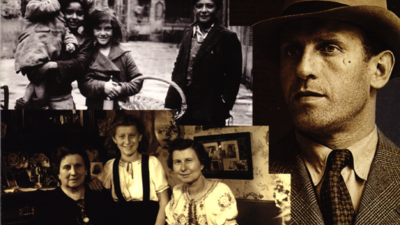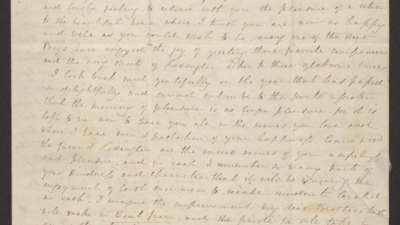Oral History Interview with Jack Zaifman
Title
Date
Contributor
Summary
Jack Zaifman was born in Radom, Poland on March 2, l925 into an Orthodox Jewish family. His father was a merchant. He attended public school and chederuntil age l4. He describes the savagery of the German bombing and invasion of Radom in September l939. Escaping from a round-up of Jews, he bicycled to Wolanow and lived for a year with a Jewish family until that small town was liquidated. He was taken for slave labor at a nearby camp manned by Gestapo, Ukrainian and Lithuanian guards. He worked as a tailor for the German Army, witnessed a massacre of 350 Jews and had to dig trenches to bury the dead. When he was ill with typhoid fever, a righteous German soldier took him to the Rodomer Ghetto hospital.
In autumn of 1941, Jack was sent to Blizyn labor camp, near the German border, where he was betrayed by a Jewish Kapo and severely beaten by guards when he tried to help another prisoner. Among the 3,000 survivors (out of l0,000) of Blizyn, he was shipped to Auschwitz where he sorted clothing of the dead. He describes the train ride, selections and his bunk make being selected for an experiment by Mengele. Jack describes walking over to another Kommando one day which was deported to Dachau where he endured brutal labor, carrying cement and laying pipes. During a death march from Dachau, April l945, he was liberated by Americans and taken to a hospital at Wolfratshausen, weighing 70 pounds. At the Feldafing DP camp he met and married his wife; they came to the United States in April l949. He began speaking in high schools and colleges about his experience in l977.
none
More Sources Like This
of
Arnold Vanderhorst
Arnold Vanderhorst, born in Arnhem, Holland, July 24, 1935, shares his childhood memories of surviving World War II by living in hiding. After his family bakery was sealed by the Nazis, his mother took him to a "strange" family, the Holthuis, with whom he remained throughout the war and liberation. Both his sister and grandmother were also placed with families; however, his parents perished in Auschwitz. The Holthius family had four children, the oldest a member of the Resistance. The father was politically active, having run for mayor of Arnhem. Arnold describes his life with them, being safe, having food and an education throughout the war, and explains that he was secure enough to play with neighborhood children despite the presence of German soldiers nearby. He was tutored by Hilda Presser, wife of photographer Sem Presser. She maintained contact with him when he later entered an orphanage. At one birthday party, photographs of children were taken professionally and turned into a book, which is in a museum in Holland. Arnold describes a brief encounter with his grandmother in the forest, when he and the Holthuis family evacuated the city.
After liberation, Arnold began an odyssey of experiences. In 1945, for reasons of health, he travelled to England, where he lived for six months. He returned to Holland, reuniting with his grandmother and sister. In 1947, the three emigrated to New York via Sweden to live with an uncle who had fled earlier. Arnold explains that after several incidents of Arnold’s misbehavior, his uncle and wife insisted Arnold and his grandmother return to Holland. He describes living in several different locations including two Jewish orphanages (Koningslaan and the AemmalannZeven for boys) and with two different families. He details his schooling experiences.In 1954, at 19, he left the orphanage and took up residence with the Perelkamp family. He describes life with them and attending a technical school until 1956 during which time he describes having difficulty concentrating on his studies because of his loneliness. He describes a close relationship with his social worker who encouraged him to seek the help of HIAS to return to the United States. He describes psychological reactions to his wartime experiences as a young child.
He found work at a brokerage house and eventually completed his education. He married and adopted two boys. In 2004, he returned to Holland for a reunion with friends.
of
Fred Kulick
Fred Kulick served with the 336th Engineer Combat Battalion (Amphibious), United States 9th Army. Near Gardelegen, Germany, in the Saar Valley, they found between 100 and 200 corpses of slave laborers who had been locked in a barn and burned to death, probably by SS guards. Their commander, Lt. Colonel Paul Bennett ordered German civilians to give the victims a decent burial. This atrocity was recorded in the battalion records. Mr. Kulick sent photographs of the victims’ bodies to Yad Vashem in Israel.
He explains why he believes German citizens knew about the atrocities and the camps but were psychologically unable to admit it. He mentions a brief encounter with a group of starving American Prisoners of War in Schleswig Holstein. He relates his battalion’s activities in Europe from the German surrender until he returned to the Unites States.
of
Liesl Loeb
Liesl Joseph Loeb was born on June 17, 1928 in Rheydt, Rhineland, Germany. Liesl, together with her father, Josef Joseph, an attorney, and her mother, Lilly Salmon Joseph, was a passenger on the S.S. St. Louis. This German luxury Liner sailed on May 13, 1939, from Hamburg toward Havana, Cuba, with 937 Jewish refugees on board.
Liesl speaks about her family background and life leading up to Kristallnacht which she experienced, hiding in her own home while Nazi hoodlums were vandalizing it. She describes the months leading up to embarkation and conditions which had to be met before leaving Germany and immigration into Cuba, which was to be temporary until the family’s quota number was called for the United States.
She describes the trip and its complications from a child’s perspective. She speaks of her father’s sense of duty as the chairman of the passenger committee and the commitment and devotion of all its members. The desperate situation of the hapless passengers to whom no country offered a haven, especially not the United States, is emphasized. After 40 days at sea, the passengers are rescued through the efforts of the American Jewish Joint Distribution Committee (JDC), by four countries - England, Holland, France, and Belgium.
Finally the Joseph family lands in England, and their life as World War II began is described. The destiny of most of the passengers who were taken in by Holland, France and Belgium ended in tragedy when these countries were invaded by the Nazis.
She describes attending school as an “evacuee”, the internment of her father on the Isle of Man as an enemy alien and arrival in New York on September 10, 1940. She concludes with her graduation from high school, and her immediate marriage thereafter. Several footnotes pursuant to the St. Louis story are added at the end of this memoir.
Self-taped oral memoir: LOEB, Liesl Joseph Date: Nov. 17, 1998

This document is a program booklet titled "Moving History Forward: Perspectives on the Holocaust," outlining the schedule of events for the 2013-2014 academic year, organized by Chapman University's Rodgers Center for Holocaust Education, Stern Chair, and Sala and Aron Samueli Holocaust Memorial Library. The program features a series of lectures, film screenings, and services focusing on various aspects of the Holocaust. Key events include a screening of "Schindler's List," discussions on figures like Oskar Schindler, Raphael Lemkin, and Amon Goeth, the persecution of the Roma, and the significance of interviewing Holocaust survivors. It also highlights events commemorating the 75th anniversary of Kristallnacht, including an interfaith service and a panel featuring Holocaust survivors and witnesses. The booklet lists prominent academics and survivors as speakers and acknowledges various sponsoring organizations for their support.
of
Nina Frisch
Nina Frisch, née Dannenberg, was born July 25, 1935 in Stanislawa (Stanisławów), Poland to an orthodox family. The family was moved into a ghetto when she was six years old. She remembers hiding in nearby woods in 1943, surviving on hazelnuts, periodically running from German troops, and that her mother was shot to death and buried there.
Staszek Jaczkowski, a Polish man, who was honored by Yad VaShem for saving 31 Jews, hid Nina and her father in a bunker in the cellar of his house from September 1943 to July, 1944, along with many other Jews, until they were liberated by the Russians. She describes in great detail how the Jewish families hiding in this bunker survived, established daily routines, and tried to keep some degree of normalcy. Mr. Jaczkowski treated the group very humanely and tried to establish an escape route for them after it became extremely dangerous to stay in the bunker. Nina and her father came to the United States in May 1949, because they could not go to Israel.
She explains how she came to terms with surviving when so many others were killed, why she is willing to talk about her experiences, and that she cannot understand how Germans could commit such atrocities and still have a normal family life.
Interviewee: FRISCH, Nina Date: April 22, 1985
